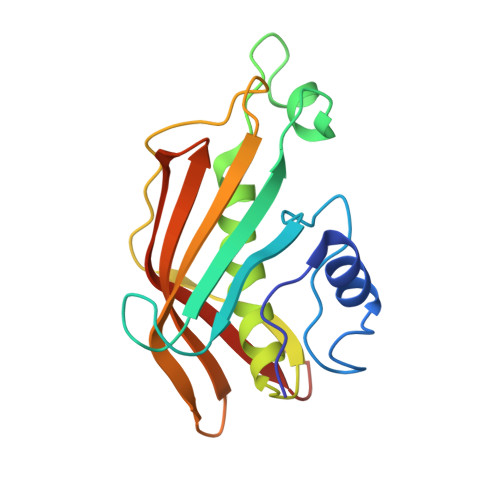Structural Insights Into the Mechanism and Inhibition of the Beta-Hydroxydecanoyl-Acyl Carrier Protein Dehydratase from Pseudomonasaeruginosa.
Moynie, L., Leckie, S.M., Mcmahon, S.A., Duthie, F.G., Koehnke, A., Taylor, J.W., Alphey, M.S., Brenk, R., Smith, A.D., Naismith, J.H.(2013) J Mol Biology 425: 365
- PubMed: 23174186
- DOI: https://doi.org/10.1016/j.jmb.2012.11.017
- Primary Citation of Related Structures:
4B0B, 4B0C, 4B0I, 4B0J, 4B8U, 4FQ9 - PubMed Abstract:
Fatty acid biosynthesis is an essential component of metabolism in both eukaryotes and prokaryotes. The fatty acid biosynthetic pathway of Gram-negative bacteria is an established therapeutic target. Two homologous enzymes FabA and FabZ catalyze a key step in fatty acid biosynthesis; both dehydrate hydroxyacyl fatty acids that are coupled via a phosphopantetheine to an acyl carrier protein (ACP). The resulting trans-2-enoyl-ACP is further polymerized in a processive manner. FabA, however, carries out a second reaction involving isomerization of trans-2-enoyl fatty acid to cis-3-enoyl fatty acid. We have solved the structure of Pseudomonas aeruginosa FabA with a substrate allowing detailed molecular insight into the interactions of the active site. This has allowed a detailed examination of the factors governing the second catalytic step. We have also determined the structure of FabA in complex with small molecules (so-called fragments). These small molecules occupy distinct regions of the active site and form the basis for a rational inhibitor design program.
- Biomedical Sciences Research Complex, The University, St. Andrews KY16 9ST, UK.
Organizational Affiliation:

















